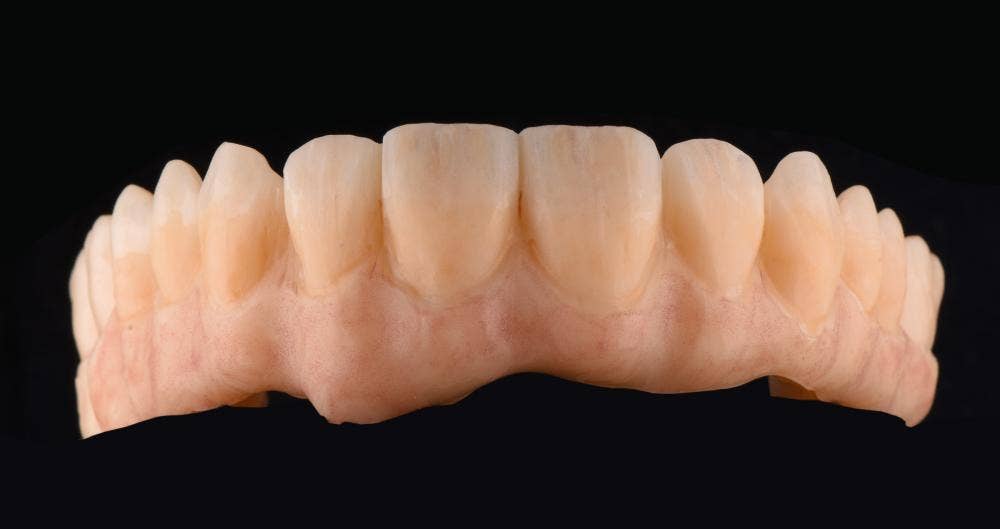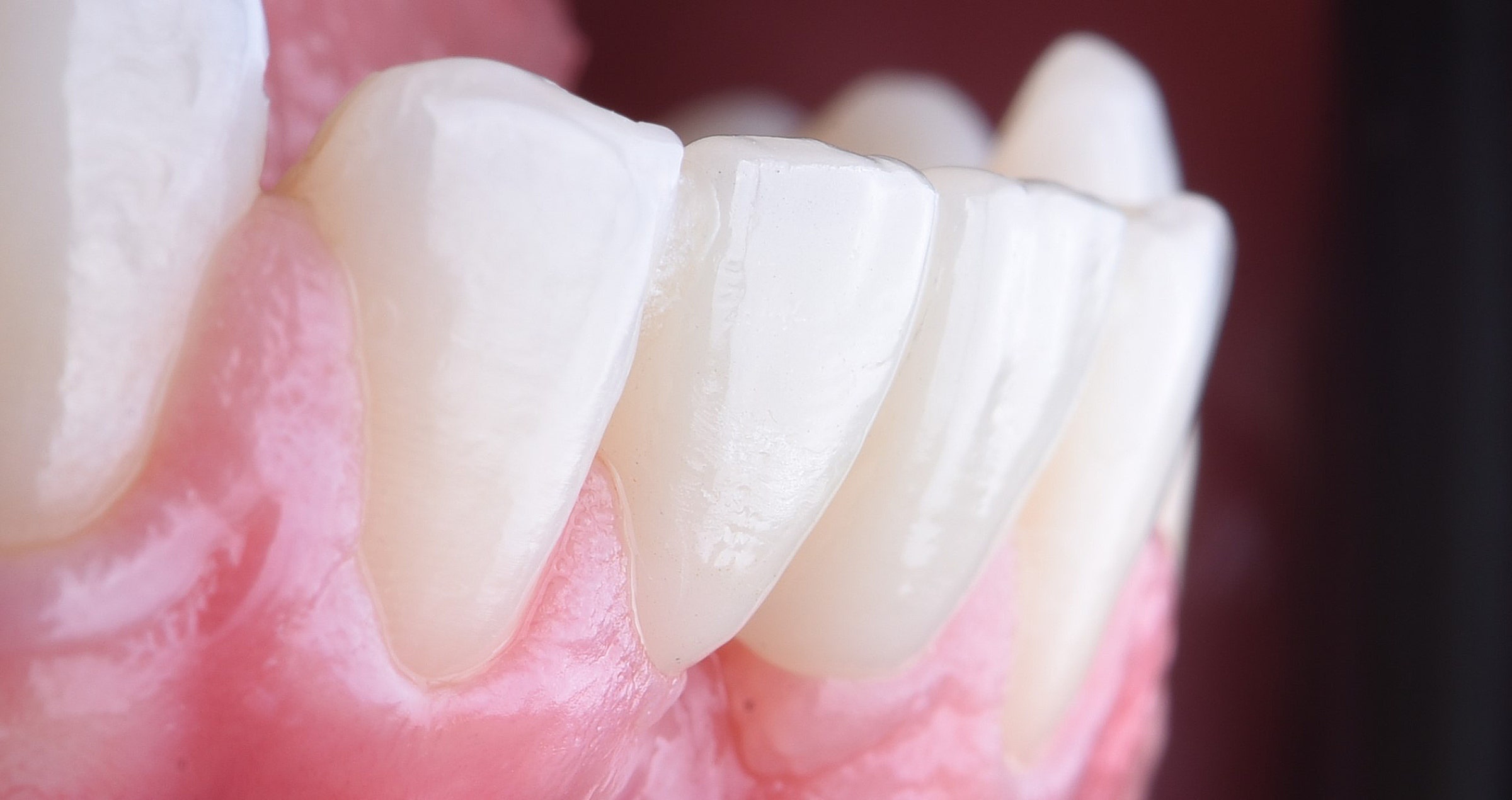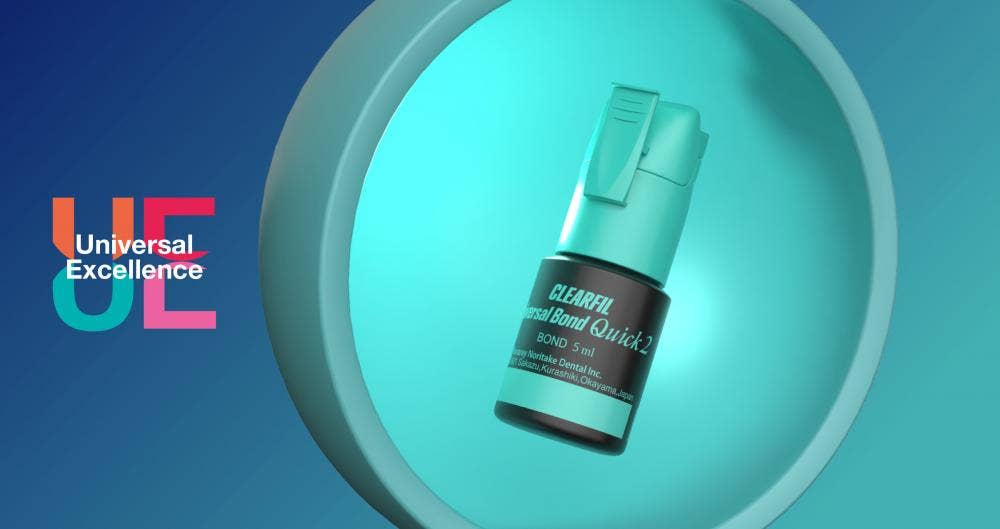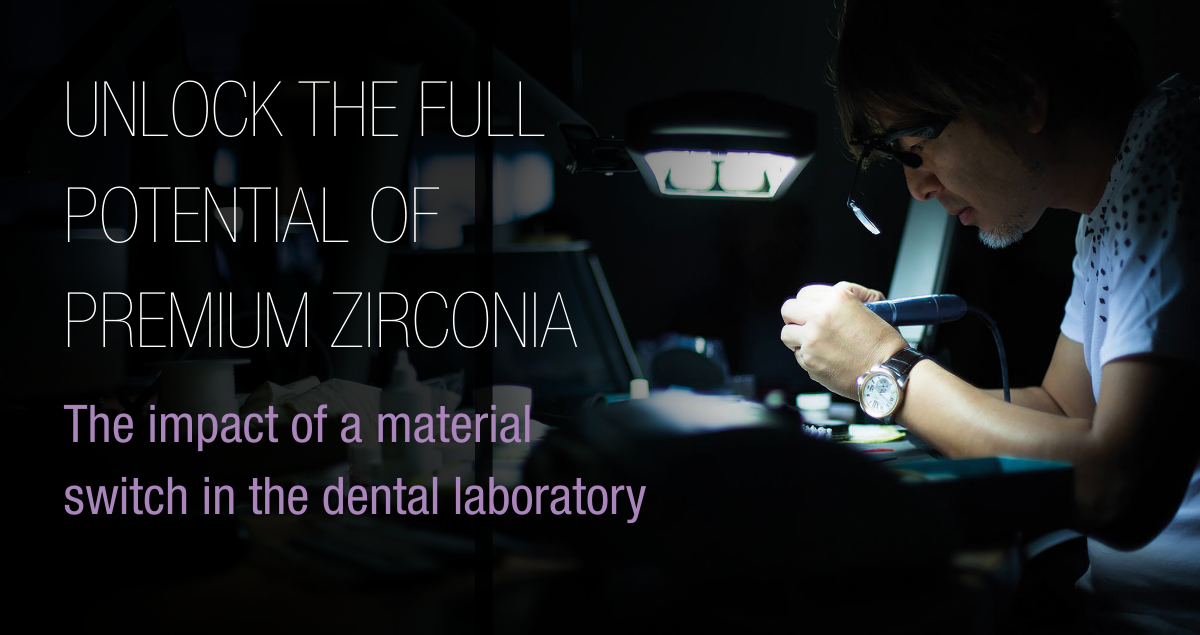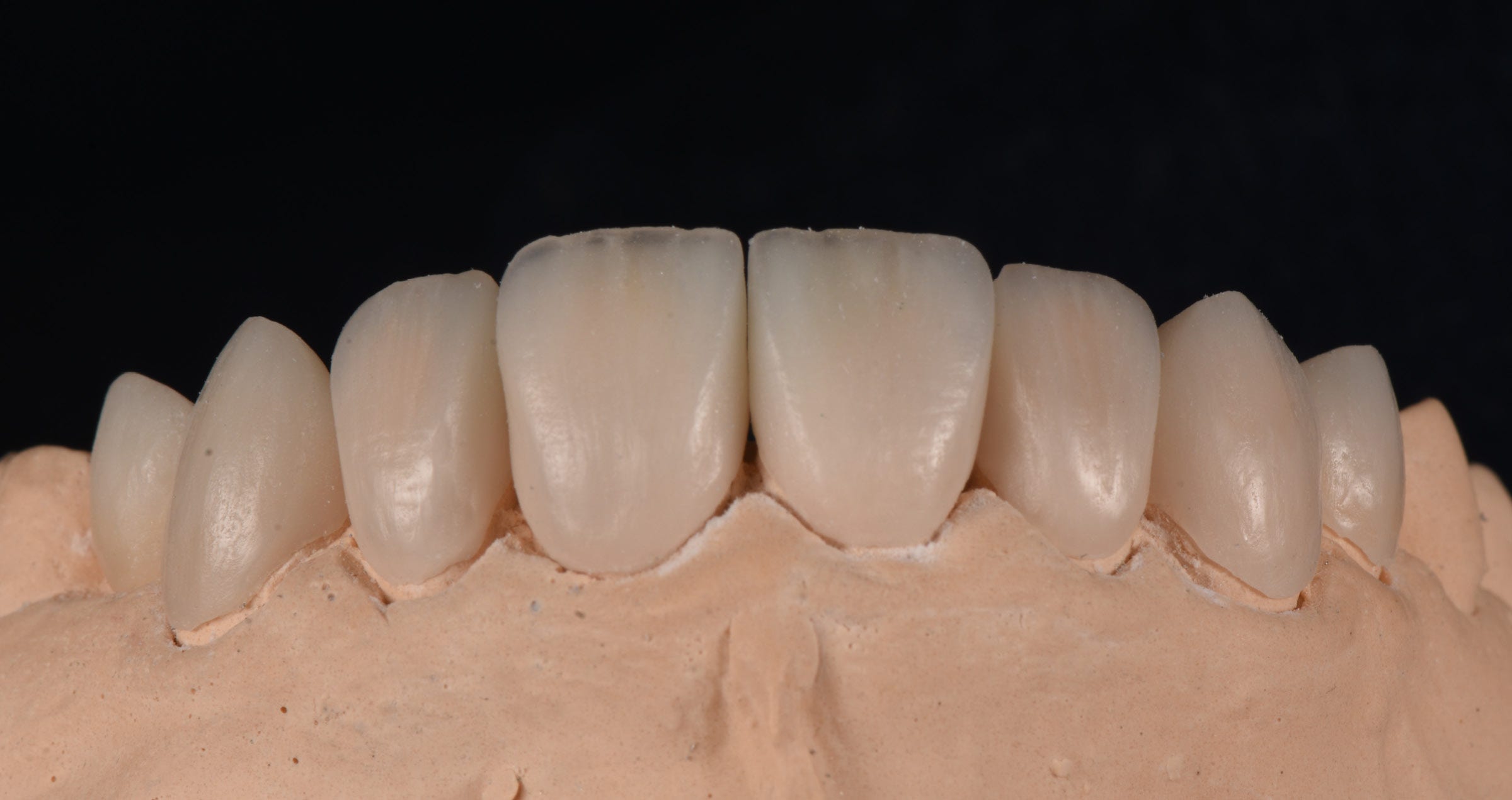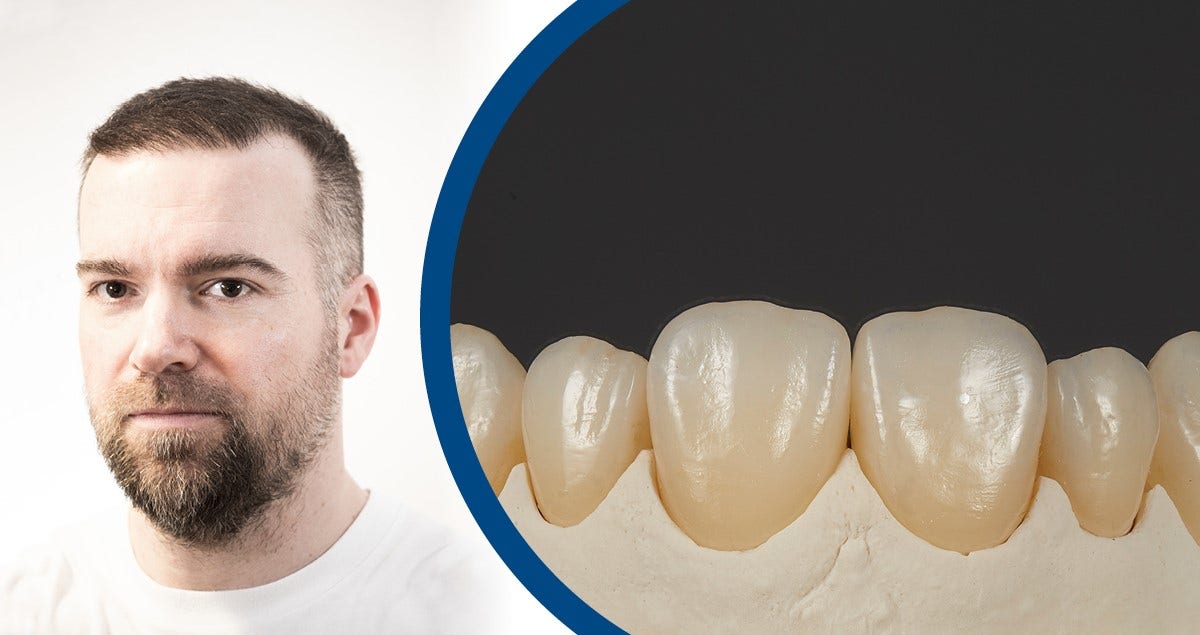
Multilayer zirconia in different translucency levels
KATANA™ Zirconia ML (Kuraray Noritake Dental) was the first zirconia on the dental market with integrated shade gradation. First presented at IDS 2013, this material has revolutionized the world of zirconia. Over the course of time, KATANA™ Zirconia UMTL, STML and the change from ML to HTML completed the product portfolio. This article highlights the differences.
By Attila Kun, Hüde in Lower Saxony, Germany
In daily clinical and laboratory routine, we become aware of the diversity of characteristics of natural teeth. Natural teeth impress with their individual optical properties and characteristics, as well as the variety in their shape and texture. The challenge of imitating these aspects with ceramic restorations is a task that we handle in the lab with passion and motivation.
Imitation of the natural tooth requires the appropriate framework material (e.g. KATANA™ Zirconia HTML), an appropriate veneering ceramic or stain system (e.g. Noritake CZR™), along with sensitivity and skill. Although modern materials lay an important foundation, implementation of the restoration is to a large extent an artistic skill. In order to select the appropriate material, depending on the indication, the dental technician should pay attention to the facts and material science (material properties, parameters). Dental sensitivity and craftsmanship are also required for aesthetic realization of the prosthetic. Whether monolithic restoration, thin-layer veneer or individually layered, zirconia offers various advantages as a restorative material (e.g. good mechanical properties, high biocompatibility). In recent years, zirconia has been further developed and optimised through material modifications, and now, new zirconia generations are available. These materials are remarkable due to their translucency and outstandingly aesthetic properties. For certain indications, monolithic restorations can be realized in such way that the optical properties hardly differ from those of a veneered restoration.
Looking back at KATANA’s history
KATANA™ Zirconia ML (Kuraray Noritake Dental) was launched in 2013. This was the first zirconia on the market with a polychromatic shade gradient (ML = Multi-Layered) and has revolutionized the market since. The chroma and saturation of KATANA™ Zirconia ML decrease from cervical to incisal. The market responded very well to the polychromatic discs, so Kuraray Noritake Dental took the next step. In 2015, the KATANA™ family grew with two new translucent materials: KATANA™ Zirconia STML (super-translucent) and UTML (ultra-translucent). Translucency studies have revealed the very high light transmission of KATANA™ Zirconia UTML (43%) and STML (38%). It should be noted that the strength of the material drops with rising translucency. In 2019, KATANA™ ML became KATANA™ HTML. This change included a shade extension from 6 to 14 shades and the adaptation to the VITAPAN Classical shades to ensure an even simpler shade selection for the dental technician for an even better communication between dentist and dental technician. A few years back, the new zirconia stains (CZR™ FC Paste Stain, Kuraray Noritake Dental) were also launched on the market, thus perfecting the KATANA™ potpourri for highly aesthetic yet durable zirconia restorations.
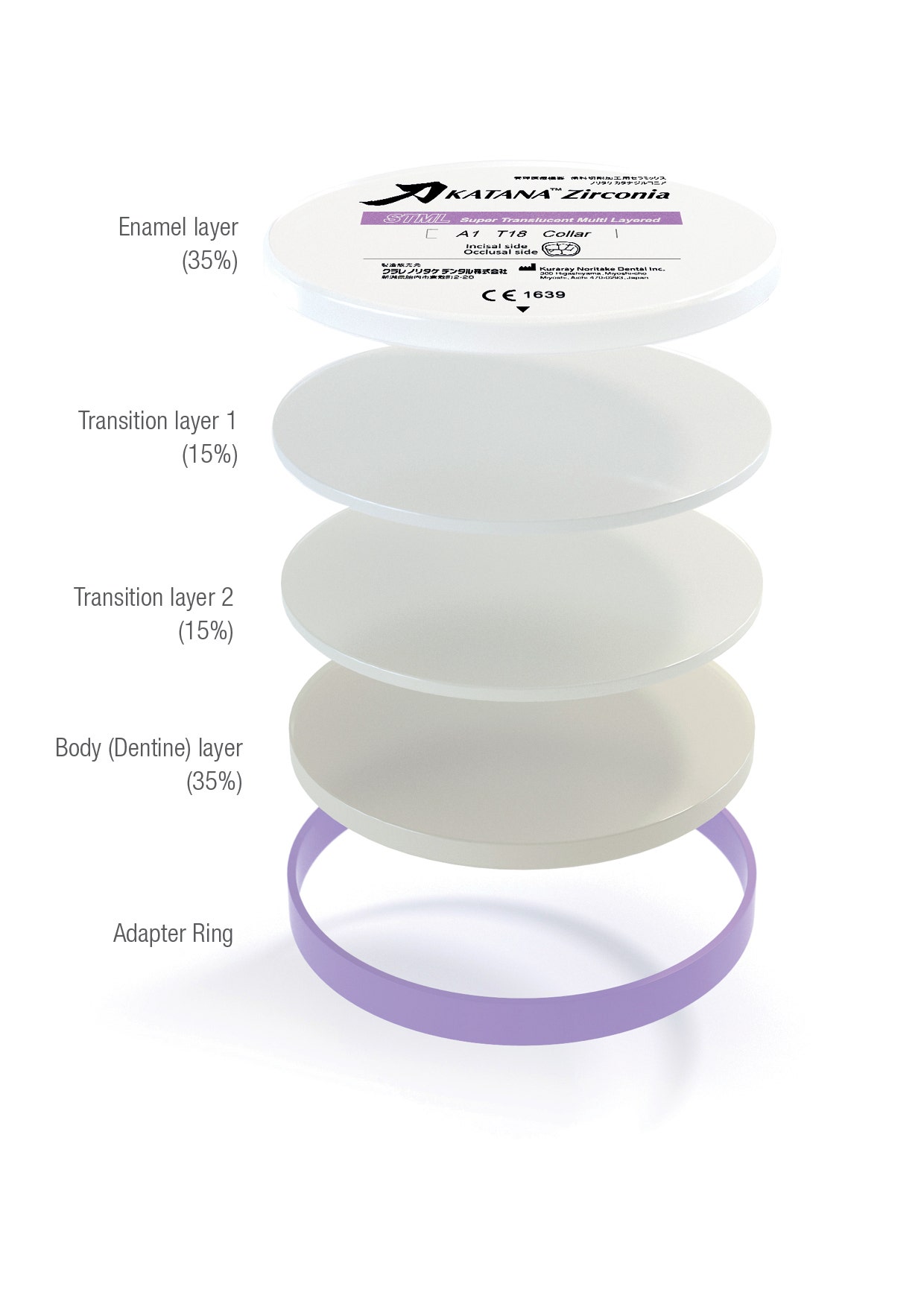 The KATANA™ Zirconia STML layered structure.
The KATANA™ Zirconia STML layered structure.

Same translucency level as glass-ceramic (e.max Press LT).
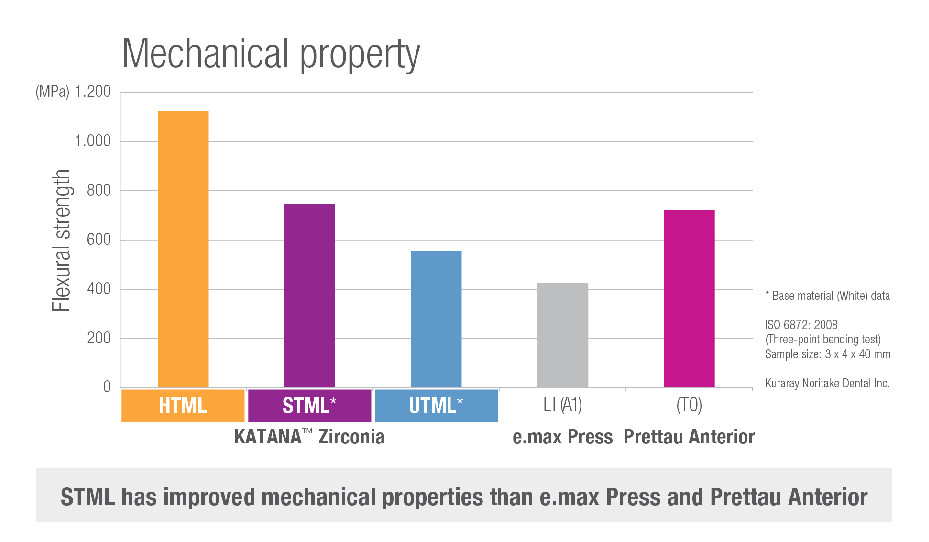
With higher flexural strength than glass-ceramic (e.max Press LT).
Comparison of KATANA™ HTML, STML, UTML with comparable ceramic products (Kuraray Noritake overview graphics)
The Japanese word KATANA™ denotes a special kind of traditional Samurai sword. A special feature is the exquisite raw material. The KATANA™ sword combines expedient form with artistic design. We dental technicians aspire to this in our work too. KATANA™ Zirconia offers us the optimal foundation here. The multi-layered KATANA™ materials show a smooth progression of shade and brightness from cervical to incisal. Our experience shows that a functional and aesthetic restoration can thus be implemented in an efficient way.
Application of polychromatic zirconia
Fully anatomical, partially anatomical or as a framework — the polychromatic KATANA™ materials can be used in a variety of ways. The integrated shade gradient displays gentle nuances of enamel, dentin and cervical shade and, in the case of STML, also a translucency gradient. Depending on the indication, the zirconia blanks open up different ways of achieving aesthetic restoration. Especially for complex repairs and anterior restorations, the set-up is an indispensable foundation for us, because the "right" material alone is no guarantee for success. Precise planning is called for. This why we have to first conceive an overall picture. The surface structure, shape and contour are built up manually in wax and after a double scan the wax-up is virtually reduced. This creates a dentin structure or framework that can be milled out of the respective zirconia.
KATANA™ multi-layered materials allow the framework to become a shade-bearing foundation. The CAD construction of the restoration is made in a reduced anatomical crown shape. A dentin core is then milled from zirconia. The ceramic veneer is reduced to a minimum. For a vivid result, the framework can also be characterised with internal stain. Shrinkage during baking is not likely. Shade stability comes from the framework. In addition, the thin veneer layer ensures low shrinkage and lays the secure foundation for high stability and a low risk of chipping. The result is a natural looking restoration. Shine, warmth, naturalness — the optical properties mainly come from the KATANA™ framework!
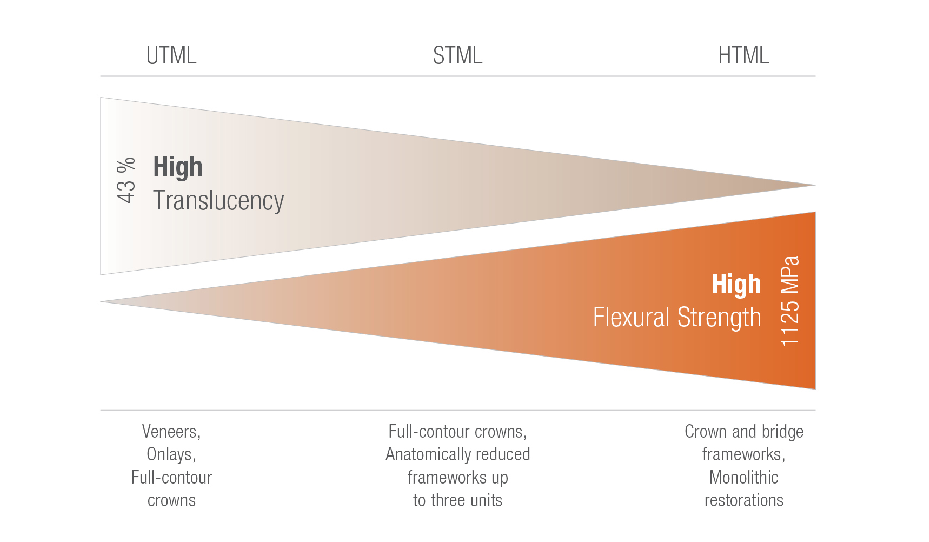
Differences between and indications for KATANA™ Zirconia HTML, UTML, STML.
KATANA™ Zirconia HTML
KATANA™ Zirconia HTML has high flexural strength. Crowns and bridges (also with a large span) are typical indications. KATANA™ HTML is available in numerous shades, which cover individual requirements in the lab. The material offers optimal optical properties for frameworks. The incident light is transmitted and yet the stump is concealed. The flexural strength is about 1125 MPa.
The framework is designed following a cut-back. The challenge of ceramic veneers (CERABIEN™ ZR, Kuraray Noritake Dental) lies in the subtle, often diffuse, shade variety of the neighboring natural teeth. These characteristics can be implemented using the internal stain technique. The intensive stains can be mixed, for example with Bright (Dilution). Shade depth and three-dimensionality are created once the layering is then covered with luster compound. Luster compounds are a special feature of the Kuraray Noritake ceramic system. The compounds envelop the actual layering like a fine cocoon. Depth and liveliness are achieved thanks to the opalescent properties.
KATANA™ Zirconia STML

Aesthetic restorations need light and translucency, which KATANA™ Zirconia STML offers. The zirconia is modified by the manufacturer adding yttrium oxide, by varying the particle sizes, and increasing its translucency. KATANA™ Zirconia STML also has a polychromatic shade gradient from cervical to incisal. In addition to the shade intensity, its translucency also varies. Therefore, this material is well suited for frameworks in the anterior region (up to three units). The lower translucency in the cervical area is optimal for the shade-bearing framework foundation. The balanced combination of graduated chroma and translucency allow the optical properties of natural teeth to be imitated to the best effect. The flexural strength is 748 MPa.
KATANA™ Zirconia UTML
UTML offers the highest translucency in the KATANA™ family. By modifying the material, the optical properties come close to those of a glass-ceramic. This extends the range of indications to include monolithic restorations in the esthetically visible region, e.g. veneers. KATANA™ UTML has less chroma than conventional zirconia. This is achieved through a consistently high degree of transparency, which brings out the intrinsic shade of the dentin (chameleon effect). KATANA™ UTML is indicated for veneers, onlays or full-contour crowns. The flexural strength is 550 to 600 MPa.
For the purpose of phantom work, we used KATANA™ UTML to produce full-contour veneers. The wafer-thin veneers were milled with a minimum thickness of 0.3 mm. Despite the thinness of the layer, there were no fractures or chipping at the edges. Individual characterization was achieved through the staining technique. The milled veneers display beautiful transparency. In order to perfectly bring out the optical properties, an adhesive bonding cement (e.g. PANAVIA™ V5, Kuraray Noritake Dental) can be used for such delicate restorations.

Wafer-thin veneers (0.3 mm) of KATANA™ Zirconia UTML on the model.
Light and shadow
Something that is often said also applies to aesthetic restorations: "What is essential is invisible to the eye". In order to obtain a perfect ceramic restoration, besides layering, the lifelike, the shape, contour and surface texture are important factors. Therefore—no matter whether monolithic or veneered—suitable preparation of micro- and macro-textures should never be overlooked. The application of gold powder, for example, has proven to be helpful. Even the finest structures become visible under the gold powder. As with black and white images, the eye is not distracted by shade effects. After incorporating the textures and the final touches, manual polishing and adjustment of the shine was undertaken.
Conclusion
The KATANA™ Zirconia series allows us flexible application and the possibility of reproducing the variety of natural teeth in an efficient way. The materials differ in their translucency and mechanical properties.
- KATANA™ Zirconia UTML is suitable for full-contour crowns in the anterior and posterior regions, veneers, inlays/onlays and single crowns in the posterior region.
- KATANA™ Zirconia STML is ideal for crowns and small posterior bridges.
- KATANA™ Zirconia HTML is a high strength framework material for crowns and bridges.
With this selection of zirconia materials, dental technicians are well-equipped and prepared for everyday work and can devote themselves to dental precision work based on individual specifications.

Dental technician Attila Kun
Hannker Dental
Ludwig-Gefe-Straße 28
49448 Hüde
info@hannker-dental.de
- 2020. gada 10. apr.


